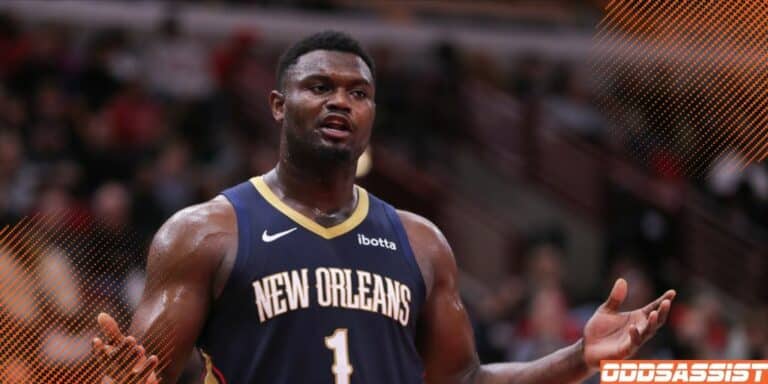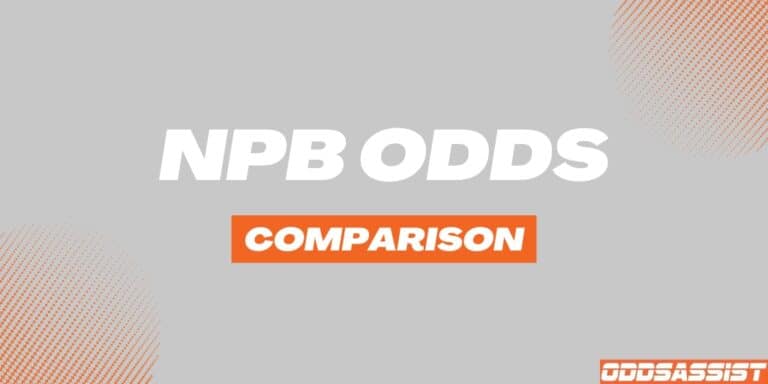Companies featured on this page may be our partners who compensate us if you sign up for one through our links. This doesn't affect our ratings or opinions in any way. Must be 21+. Gambling Problem? Call 1-800-GAMBLER. See full disclosure.
When betting on sports like football, basketball, and baseball, there is typically a clear-cut outcome: one team will win and the other will lose.
Outside of the rare tie in an NFL regular season game, it’s all but guaranteed that one team will go home with the W, and the other the L.
But what about sports like soccer and hockey, where ties in regulation happen regularly? In these sports (and certain other scenarios), the three-way moneyline bet becomes something every bettor must understand and consider.
A three-way moneyline bet includes three possibilities:
- Team A to win
- Team B to win
- Tie
In exchange for the increased difficulty of a three-way moneyline bet, you receive a higher payout than you would with just the corresponding two-way moneyline bet.
What Is the Three-Way Moneyline?
The typical moneyline bet requires you to answer a simple question: Who will win?
In many betting scenarios, this question is enough. In Major League Baseball, for example, there is always a winner. In some sports, though, the possibility of a tie is very real, and in these cases a three-way moneyline is necessary.
Bettors who first made their way into sports betting during the most recent World Cup quickly learned about the three-way moneyline. Not only can you bet on either team to win or lose, but you can also bet that the teams will tie.
You have three options in a three-way moneyline:
- Bet the favorite to win
- Bet the underdog to win
- Bet on a tie
Expect the favorite to have the least appealing odds (they’re the favorite, after all), while the odds of a tie and an underdog victory may be similar (expect + signs next both, in most cases).
The biggest exception to this is if two teams are very evenly matched up. In this case, you will likely see shorter odds—meaning it’s more of a favorite to hit—on the tie bet.
Can I Still Bet The Two-Way Moneyline When the Three-Way Moneyline Is Available?
Even when the three-way moneyline is available, you’ll often see a two-way moneyline option as well. If you choose to bet the two-way moneyline, you receive your money back in the case of a tie (also known as a push).
Because of the possibility that bettors will get their money back in the case of a tie, the two-way moneyline generally offers less favorable payouts. In a three-way moneyline, there is no chance of a push—if teams tie during the regular period, those who bet either the winner or loser forfeit their bet. On the other hand, those who bet the tie option on the three-way moneyline win their wager.
Because the three-way moneyline requires bettors to choose between three options rather than two, they generally get more favorable payouts when they wager correctly.
Why the Three-Way Moneyline Suits Soccer Matches
Soccer fans (or “football” for those outside the states) are familiar with draws. Whether both teams burn up the scoreboard but end in a 4-4 draw, or a contest ends scoreless, draws are a staple of soccer matches.
Therefore, the three-way moneyline isn’t just a logical option (as it is in NHL matches that go to overtime), it’s essential. Soccer bettors have the option of betting:
- The favorite to win
- The underdog to win
- The match to end in a draw
Because regular-season soccer matches typically can end in a draw, the three-way moneyline is the standard option for soccer wagers. As is always the case in three-way moneylines, payouts are typically more generous than they would be in a two-way line, as the bettor must select from three potential outcomes rather than two.
As an example of typical odds in a three-way soccer moneyline, a 2022 tilt between Tottenham and Brentford saw:
- Tottenham to win at +105 odds
- A draw at +250 odds
- Brentford to win at +260 odds
While two-way moneyline bets are often available for soccer matches, they’re often offered with a point spread in +1/2 or -½ increments (such as +0.5, +1.5, +2.5, etc.).
These half-point splits mean that even if a game ends in a 1-1 tie, if the spread was plus/minus 0.5, the favorite (-0.5) will lose and the underdog (+0.5) will win.
Why the Three-Way Moneyline Suits NHL Games
When you bet on an NHL match, someone will emerge victorious…eventually. However, the difficulty of scoring goals in hockey means that teams are often knotted at the end of three periods. In these cases, overtime becomes necessary.
Therefore, some books offer both two-way and three-way moneyline bets for NHL matches. If you bet the two-way moneyline in a tilt between the Maple Leafs and Candiens, you simply pick one of the two teams to win, even if the victory comes in overtime.
When you bet the three-way moneyline in Leafs-Canadiens for the entire match or a specific period, you must choose:
- Whether the Leafs will win at the end of 60 minutes (or at the end of the specified period)
- Whether the Canadiens will win at the end of 60 minutes (or the specified period)
- Whether the teams will be tied at the end of 60 minutes (or the specified period)
If you choose the favorite (the Leafs), you might receive +140 odds. For the underdog (the Canadiens), you might receive +245 odds. And for a tie, you might receive odds pegged somewhere between the favorite and ‘dog, in this case around +180.
Why You Won’t Often Find a Three-Way Moneyline in NFL, NBA, or MLB Game Wagers
While each sportsbook is unique in what it offers, three-way moneyline bets are far less common in baseball, basketball, and football games.
Ties are much less common in baseball than they are in hockey and soccer matches, Unlike soccer, all Major League Baseball ties will be settled in extra innings. Except under extraordinary circumstances, baseball games don’t end in a tie. The same goes for the NBA.
Therefore, sportsbooks typically see three-way moneyline bets in baseball and basketball matches as not worth the trouble of calculating the third line.
While ties do happen in football games, they’re not frequent enough for most sportsbooks to compose three-way moneyline bets for each matchup. When games do go to overtime, usually one team pulls it out.
Furthermore, points are easier to come by in basketball, football, and even baseball than they are in soccer and hockey. Easier points mean less likelihood of ties.
So, while some sportsbooks will offer three-way moneyline bets for baseball, basketball, and football, they’re not available in most books.
>> Learn More: Most Common Types of Sports Bets






